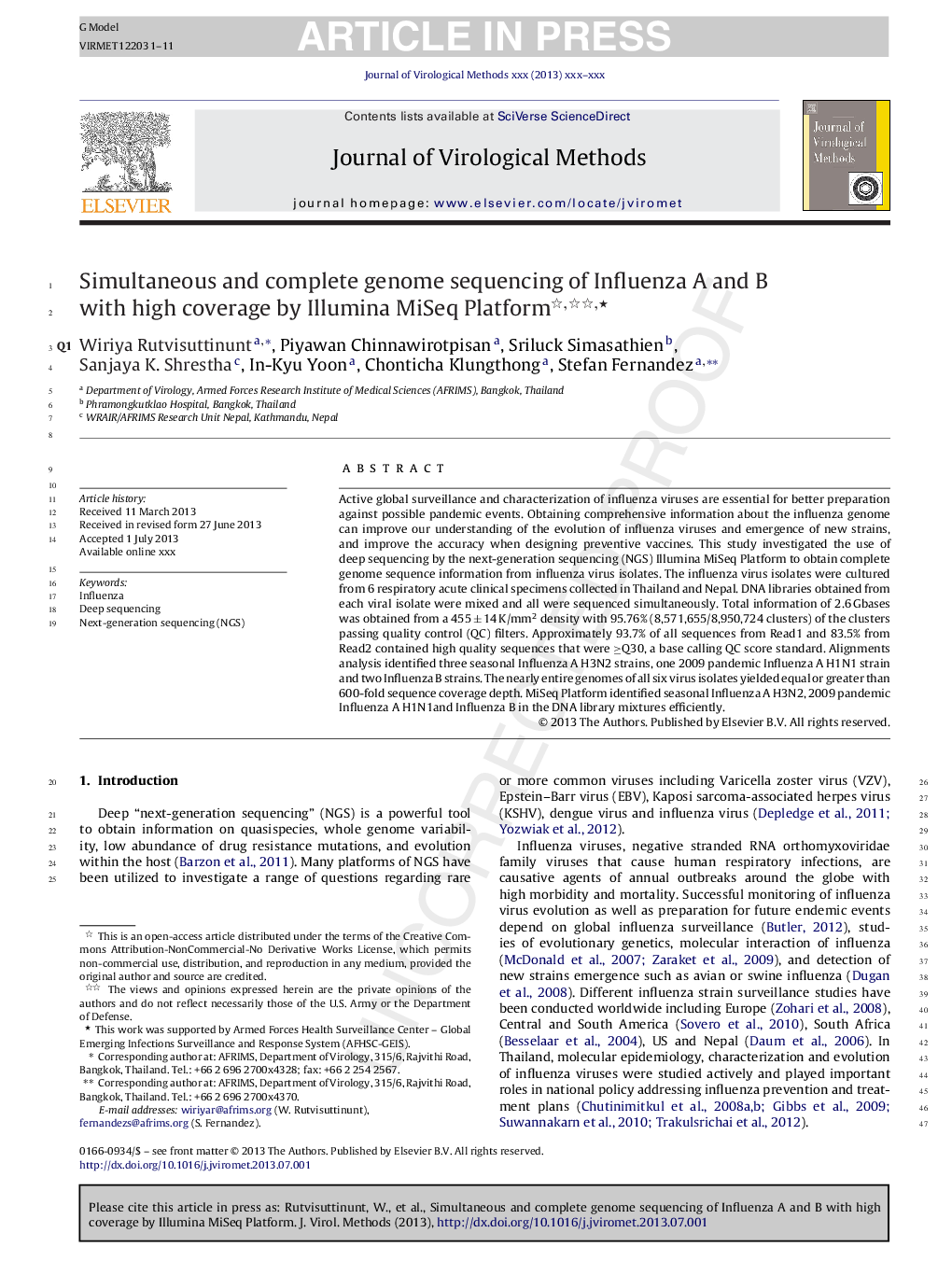| Article ID | Journal | Published Year | Pages | File Type |
|---|---|---|---|---|
| 6134041 | Journal of Virological Methods | 2013 | 11 Pages |
Abstract
Active global surveillance and characterization of influenza viruses are essential for better preparation against possible pandemic events. Obtaining comprehensive information about the influenza genome can improve our understanding of the evolution of influenza viruses and emergence of new strains, and improve the accuracy when designing preventive vaccines. This study investigated the use of deep sequencing by the next-generation sequencing (NGS) Illumina MiSeq Platform to obtain complete genome sequence information from influenza virus isolates. The influenza virus isolates were cultured from 6 respiratory acute clinical specimens collected in Thailand and Nepal. DNA libraries obtained from each viral isolate were mixed and all were sequenced simultaneously. Total information of 2.6 Gbases was obtained from a 455 ± 14 K/mm2 density with 95.76% (8,571,655/8,950,724 clusters) of the clusters passing quality control (QC) filters. Approximately 93.7% of all sequences from Read1 and 83.5% from Read2 contained high quality sequences that were â¥Q30, a base calling QC score standard. Alignments analysis identified three seasonal influenza A H3N2 strains, one 2009 pandemic influenza A H1N1 strain and two influenza B strains. The nearly entire genomes of all six virus isolates yielded equal or greater than 600-fold sequence coverage depth. MiSeq Platform identified seasonal influenza A H3N2, 2009 pandemic influenza A H1N1and influenza B in the DNA library mixtures efficiently.
Related Topics
Life Sciences
Immunology and Microbiology
Virology
Authors
Wiriya Rutvisuttinunt, Piyawan Chinnawirotpisan, Sriluck Simasathien, Sanjaya K. Shrestha, In-Kyu Yoon, Chonticha Klungthong, Stefan Fernandez,
